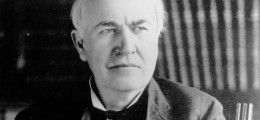For Starbucks, the world’s leading retailer, roaster, and brand of speciality coffee, 2008 was a tough year. Amid a struggling economy and increased competition from cheaper rivals, the company’s net income during the first three months of the year fell 28 percent compared to the same period in 2007. Starbucks’ founder Howard Schultz announced that the company had “lost its way,” becoming too standard and corporate, and less entrepreneurial—less like a local coffee shop. Shultz resumed the role of CEO and president, and for the first time the company closed stores on a broad scale.
Fast forward a year. Starbucks posts a 4-percent growth in total sales, comparable store sales are up 4 percent (driven by increases in store traffic and average ticket price), and the company’s margins are up 8.5 percent. As a result, the company’s earnings jump to $241.5 million in the final quarter of 2009, more than three times the $64.3 million seen a year earlier. Even more impressive is that Starbucks’ consumer research shows higher satisfaction in every major indicator, such as value perception and experience, compared with 2008.
So why should you care about Starbucks’ turnaround?
Aside from the obvious financial success, the methodology behind the transformation reveals important lessons about driving rapid change on a large-scale. Although many analysts would argue that the turnaround was due to store closures, aggressive cost cutting, and price increases, Shultz would take offense at this “financially focused” view of the transformation. Starbucks did shore up key financial metrics, but Shultz’s vision for the company’s turnaround was to reconnect with its past: build upon the legacy of innovation and provide customers with a distinctive “Starbucks experience.”
In the July/August 2010 issue of Harvard Business Review, Shultz discussed his views of the four key elements to the dramatic turnaround at Starbucks:
Own the issues. The first step of the turnaround was to challenge the leadership team to accept responsibility for the self-induced mistakes. This started with Shultz. As chairman of the board, Shultz acknowledged to the entire company that he was just as much to blame for the current situation as operational leaders. An often overlooked step in the process, leaders “owning reality” is critical to expediting change. Without the willingness to take responsibility, leaders spend their time justifying past decisions and protecting sacred cows, rather than learning from mistakes and making immediate course corrections.
Engage leadership in the process. It was critical to Shultz that all managers and leaders own the relationship between each barista and customer. “One cup of coffee, one customer, one barista at a time.” To help ensure this, Shultz created a very public expression of this commitment to be accountable and responsible for each and every customer experience. In the midst of financial woes, the company spent $30 million and took all 10,000 store managers to New Orleans for a company conference. Prior to the start of the conference, every manager participated in five hours of community service (50,000 hours in total). Using their hands, heads, legs, and backs, the team kicked off their renewed commitment to customer service by doing service.
Raise revenue and cut cost. After getting buy-in from company leaders, the team initiated a number of improvements aimed at quickly changing the financial condition of the company. During the course of the first year, the company cut $581 million in costs, of which 99 percent were permanent and not customer-facing. The company also made a number of changes in the stores to better align product and service offerings, including reintroducing Pike’s Place blend, selling healthier snacks, and launching a new loyalty card. Finally, Starbucks ignored conventional advice and launched its highly popular VIA instant coffee. With $100 million in annual sales during its first year, VIA provided a much needed shot in the arm as well as opened more than 30,000 new points of distribution for the company.
Focus on the customer experience. As Shultz stated, Starbucks brand is based on quality coffee, but more important, on the relationship each customer has with a barista. In a society where good service is rare and basic decency is often absent, Shultz decided the company would take a stand and demonstrate civility, respect, and trust in each customer interaction. In addition, much to the dismay of Wall Street, Shultz got rid of reporting monthly metrics at the store level to move the pressure from producing good numbers to producing a good experience. Finally, Starbucks launched www.mystarbucksidea.com as part of a new social networking strategy to connect the company with its customers in real time. My Starbucks Idea is a portal that allows customers to suggest improvements to the store, products, and pricing, and for other customers to vote and identify the most popular ideas. Actual Starbucks employees engage with the customers each week, respond to the ideas, and when an idea is selected, provide timetables and commentary on the implementation. The portal generated more than 75,000 ideas in its first year alone.
At its core, “Starbucks represents something beyond a cup of coffee,” says Shultz. While targeted revenue and cost improvements are one of the four primary elements of Starbucks’ transformation, Shultz emphatically states that it was the focus on the leadership engagement and creating a unique customer experience that were the secret to the success.
Like Starbucks, if we want to create an environment where passion drives our people and people drive our profits, we need to view change as something beyond the tools and techniques of continuous improvement. Developing a lean culture is not the byproduct of achieving financial results through targeted kaizen events and Six Sigma projects. In our desire to drive business results, we often let data, metrics, and financial impacts take precedence over crafting an inspiring vision and creating an emotional connection between our people and a larger purpose.
To accelerate your results, spend less time defining the what and how of continuous improvement, and more time defining who and why. Engage people with an inspiring vision and connect their activities through aligned management systems. By pointing the organization toward a customer-centric future state and giving people the autonomy to change products, services, and processes to achieve their goals, the organization can exponentially increase its success.




Leave a Reply